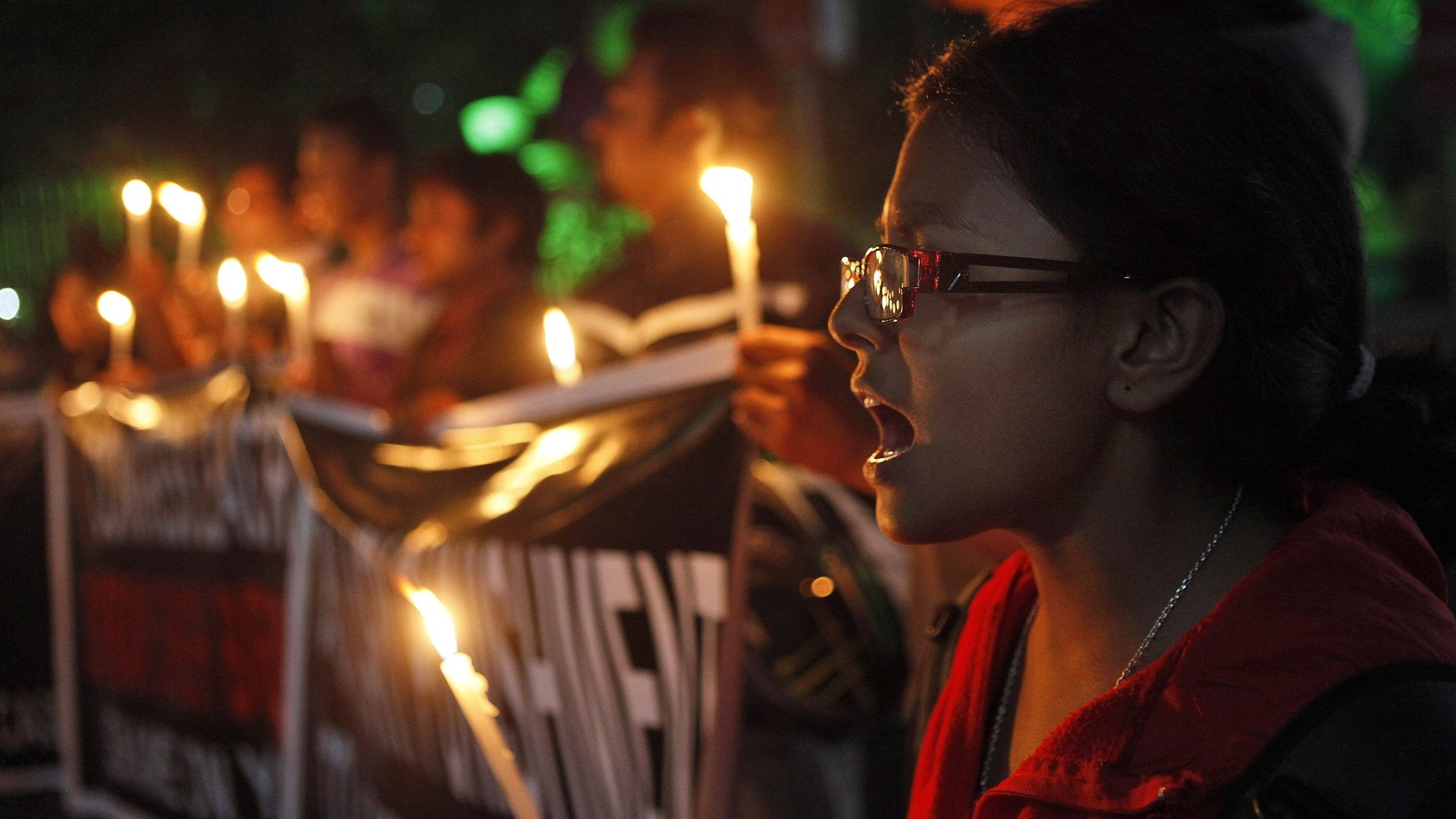How the Indian dream died with the Delhi gang rape victim
The death of a young woman gang raped aboard a bus in Delhi has captivated the world, from candlelight vigils to fiery tweets vowing justice.


The death of a young woman gang raped aboard a bus in Delhi has captivated the world, from candlelight vigils to fiery tweets vowing justice.
But it is the short life of the 23-year-old woman that explains the hunger, demography and sleeplessness at the heart of India’s economic turnaround. The family hailed from rural Uttar Pradesh but moved to Delhi for better jobs and education. Her father worked at the airport earning 7,000 rupees a month ($127). A brighter future was willed of her, the eldest of three, so she enrolled in a physiotherapy course. She attended classes between noon and 5 p.m., then worked 7 p.m. to 4 a.m. at a call center, answering questions from Canadians about their mortgages. She spent the Sunday before she was raped seeing the Life of Pi at a newer posh mall in South Delhi, aptly named Select Citywalk.
With her died a piece of the Indian dream: The upward mobility that defines modern India, a palpable sense that you could be Somebody if you study and work hard enough; that your caste, your parents, your gender, might not get in the way after all. This belief has powered India’s meteoric rise, growth so phenomenal there is no shortage of attempts to brand it. India shining. Incredible India. India 2.0. India unbound. The Indian century. India’s miracle.
Is it still true? In a country where a woman is reportedly raped every 20 minutes, why does she matter so? What is one life, after all, in a nation of more than 1 billion?
Five men were charged this week for their role in the rape on the private bus and eventual murder of the woman; a sixth will be tried in juvenile court. But even if the case is fast-tracked, as the government has promised, even if all are brought to justice, it will hardly settle the concurrent trial waging across the country: that of the Indian Dream.
Granted, the playing fields of India have never been quite even, hobbled by a legacy of colonialism, poverty, overpopulation. Still in the wake of the economic reforms began in 1991, change was rapid and progress was real. With jobs came consumption, and vice versa. GDP growth in the double digits was in sight. Then Lehman Brothers collapsed, in September of 2008. A few months later came another blow as terrorists attacked Mumbai over a three-day period, killing 164 people and injuring hundreds more.
The attackers hailed from Pakistan but the incident’s aftermath—marked by vigils and protests, too—lay some of the blame squarely on the Indian government and its inability to keep citizens safe. I lived in India then and wrote an essay pondering who to blame:
To be sure, many collective errors helped create the conditions that made the umpteenth strike in the war on India so easy. Consider Indians’ overconfidence over the last few years, this tendency to celebrate progress in spite of the gods and government, the nudge-nudge-wink-wink culture we all know. Obviously, a country can never be on course to be a superpower if it must skirt or grease its government’s palm every step of the way.
Eighteen months ago, Indians took to the streets again, riled after a series of high-profile scandals in government including corrupt contracts awarded by the Commonwealth Games. In an essay critical of Delhi’s image, my friend Samanth Subramanian wrote in the National:
…it has sparked, even among Delhiites who are by no means cranks, a crisis of self-doubt that sits oddly with the economic exuberance and the predictions of superpower status which occupy the Indian air today. I’ve certainly never seen such sustained pessimism about a project on the part of the media, even schadenfreude, as I have with the Commonwealth Games over the past two years. Neither have I heard so many despairing generalisations, in casual conversation, about how we’re unable to get anything right. A successful Games now seems almost beside the point. Our comfortable bubbles of confidence have already been lanced…
And so in this uncharacteristically frigid Delhi winter, the protesters returned—rallying this time not around hundreds of deaths or millions of rupees lost but a lone student whose life was cut short on her way home from the movies. Women’s rights is paramount but the other issues are becoming all too familiar: law and order, transparency in government, the right to believe a better life is possible, as this victim so fervently did. Ultimately, it appears six men are responsible: They allegedly attacked the woman and her male companion, beat him, raped her, leaving her with wounds she succumbed to two weeks later. But it was a breakdown of governmental and societal institutions that also enabled it to be so, from the illegal bus they boarded (a route made possible by bribing traffic authorities) to the fact that no passersby stopped to help the naked, bleeding pair after the attack. This is why the crowds are not thinning, why news and social media can’t stop following this story, why each fresh detail about her life makes us cry harder.
This week, her male companion maturely looked beyond vengeance and asked: “What are we protesting for? What has happened should not happen again. We have to look at the solutions… Protest and change should not only be for her but for the coming generations as well.” In other words, punishing the offenders is just the beginning.
It is worth remembering that it took a near-default to jumpstart India’s economic reforms, back in 1991. Already, India’s current crisis has claimed the simple dreams of one woman. But it is not too late for the rest of the nation. Yet again, nothing short of an overhaul will do.